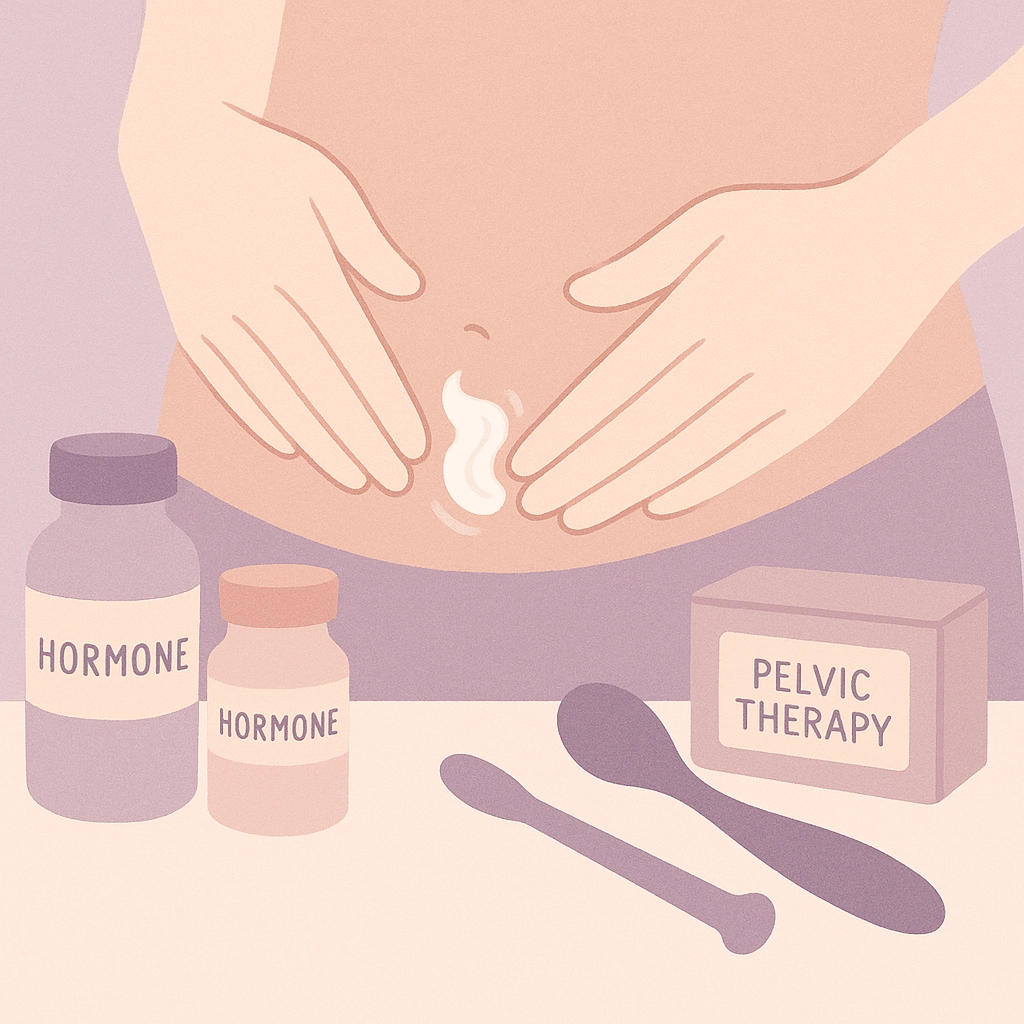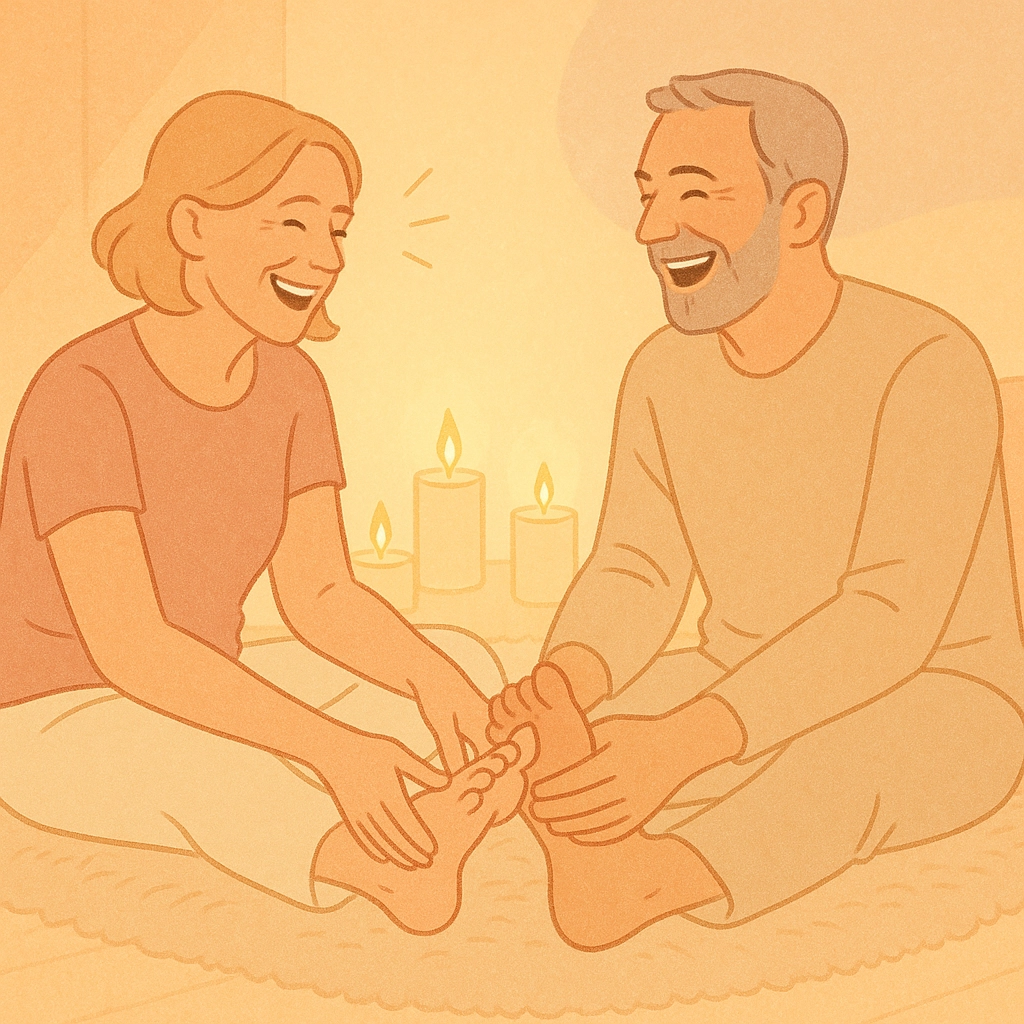
The New Rules of Intimacy: Reclaiming Connection, Desire, and Confidence in Midlife
Share
Rediscovering intimacy in midlife isn’t about giving up, settling, or waiting for the “spark” to magically return—it’s about rewriting the script on connection, desire, and self-confidence. This new chapter is less about what was, and more about what’s next: deeper communication, changing bodies, and the freedom to explore new kinds of pleasure (yes, even if that pleasure includes pajamas, dry humor, and, occasionally, dry skin).
Let’s talk about how to make midlife intimacy your best era yet—real talk, science-backed ideas, and practical tools for reconnecting with yourself and your partner.
Understanding Midlife Intimacy: What’s Really Happening?
Midlife marks a giant shift—physically, emotionally, even spiritually. A lot of us grew up with the myth that after 40 or 50, desire falls off a cliff. The reality? Desire, connection, and confidence can absolutely thrive in the second act. But there are some new ground rules.
Responsive Desire: The New Normal?
Here’s the truth: spontaneous, fireworks-in-the-middle-of-the-day desire isn’t how most people experience intimacy in midlife. Instead, a lot of us develop what’s called “responsive desire.” That means arousal often comes after touch, closeness, or connection—not before. (If you ever thought, “I’m just not in the mood until I start cuddling,” you’re not alone.) This shift doesn’t mean anything is broken. Instead, it’s an invitation to approach intimacy without pressure or outdated expectations.
You can learn more in our resource: Low Libido? You’re Not Broken—You’re Asking for Attention.
The Empty Nest, New Beginnings
For many couples, midlife coincides with the “empty nest”: kids move out, routines change, and suddenly… it’s just the two of you. While the extra space and quiet can feel foreign (or even awkward), it also provides an opportunity to rediscover each other—and yourself—outside the parenting role.

Supporting Your Body: Hormones, Pelvic Health, and More
Think of your body as the foundation for intimacy—and sometimes, it needs a little tune-up.
Hormonal Support
Hormones drive a lot of our physical responses but, let’s face it, they don’t always cooperate as we age. For women and folks assigned female at birth, local vaginal estrogen can restore tissue health, lubrication, and blood flow, making things easier (and a heck of a lot more comfortable). Systemic hormone therapy, when appropriate, can support libido, mood, sleep, and overall well-being.
Testosterone (yep, even in smaller amounts for women) can help with arousal and orgasm. Of course, you should always consult a medical provider to see what’s safe and right for you.
Pelvic Floor Physical Therapy
Even if you’ve never thought about it before, your pelvic floor is basically the MVP of sexual wellness. Tension, pain, or lack of coordination can seriously impact sensation and comfort. Pelvic floor therapy—sometimes just a few sessions—can make a huge difference, not just for sex, but for daily confidence and health.
Pleasure Products & Body-Safe Solutions
Don’t underestimate the power of quality lubes, moisturizers, and toys designed for sensitive midlife bodies. Friction and dryness (totally normal, but totally fixable) don’t need to be barriers. Explore our favorite picks in our Bath & Beauty Collection.
Nervous System Healing: Safety First, Sexy Second
You can have all the hormones and toys in the world—but if your nervous system is stuck on high alert, intimacy may feel out of reach. Many of us carry unresolved stress, trauma, or simply the habit of “always being on,” which sends our bodies into a constant state of vigilance.
Breathwork & Mindful Practices
Simple practices like slow, deep breathing signal to your body that it’s okay to relax, receive, and enjoy. Even a few minutes a day can retrain your stress response and open the door back to pleasure.
If this is new to you, check out our guide: Self-Care For a Healthy Libido.
Somatic and Trauma-Informed Approaches
Sexuality lives in the body—not just the mind. Working with a coach or therapist who’s trained in somatic (body-based) practices can help release old patterns and restore your natural capacity for connection.
Communication: The Relationship Superpower
Here’s a simple but radical truth: you don’t need to figure this out alone or in silence. The best midlife intimacy advice might just be this: talk about it—all of it.
The Big Conversation
Set aside time (the quiet hour before sleep works well) to talk about:
- What have we loved and missed in our intimate life so far?
- What’s become challenging or uncomfortable? (No shame. No blame.)
- How have our bodies, desires, and dreams shifted?
- What would we love to explore next—together or even separately?
The goal? Curiosity over criticism. This isn’t a performance review—it’s a playground for understanding each other better. Use humor, patience, and, if needed, a bottle of wine.
We’ve got tips on How to Talk to Your Partner About Sex Without the Shame.
Making Intimacy Fun Again
Sometimes, pressure kills pleasure. Instead, try:
- Scheduling low-stakes “dates” to just be close, not always aiming for sex.
- Experimenting with new kinds of touch (think massages, baths, gentle caresses).
- Trying something novel—whether that’s a new activity together, reading erotic fiction, or taking a couples’ workshop.

Pleasure Mapping and Expanding Your Repertoire
Midlife is the perfect time to get curious about your own (and your partner’s) body all over again. Pleasure mapping—exploring what feels good, where, and how—can be a surprising journey, especially as sensitivity and preferences change.
Letting Go of Performance
Forget “shoulds”. This phase of life isn’t about doing it the way you always have, but discovering touch, connection, and intimacy on your own terms. If “quickies” are out and long, slow warming up is in, great! If orgasms look different than they used to, that’s part of the adventure.
Embracing New Tools
There’s no shame in using supports. From vibrators to massage oils, these aren’t crutches—they’re bridges to new experiences. Sometimes, switching things up (even just where or how you connect) can reignite sparks.
For inspiration, browse our Massage Collection and start a new ritual of slow, sensual touch.
Building Confidence: Intimacy Starts With You
One of the best-kept secrets about thriving intimacy in midlife? Confidence. Not the kind based on what you look like or how often you have sex, but the deep knowing that you’re worthy of pleasure, care, and connection—just as you are.
Self-Care Isn’t Optional
Prioritize yourself: regular movement, rest, healthy food, and joyful hobbies aren’t just wellness buzzwords—they’re tangible ways to stay in touch with your own body and needs, which is vital for desire.
Silence the Shame
It’s normal to have ups and downs—and there’s a whole world of women (and partners!) figuring it out right alongside you. Don’t let embarrassment or outdated messages silent your desire for joy and fulfillment.
If you’re struggling with feeling “not sexy” anymore, read Why So Many Women Avoid Sex (And How to Feel Desirable Again—Without the Shame).

When to Seek Support
Sometimes, even with the best communication and intentions, extra help is the best next step. Sex therapy, couples coaching, and medical consultation can all make a world of difference in breaking out of stuck patterns or addressing specific issues.
At Sweet Ember, we offer personalized coaching and intimacy support designed for this exact stage of life—empowering you to reclaim your connection and confidence, one step at a time.
Choosing Your (New) Adventure
The new rules of intimacy aren’t really rules at all. They’re more like invitations: To be honest. To slow down. To get curious. To advocate for your pleasure and your healing. And most of all, to accept that midlife can be a time of renewal, not retreat.
Whether you’re starting fresh, rekindling a long-term partnership, or exploring solo, this chapter is yours to write.
Explore more on the Sweet Ember Blog, or schedule a one-on-one conversation if you want support tailored to you.
Here’s to feeling connected, confident, and turned on by life—at every age.
